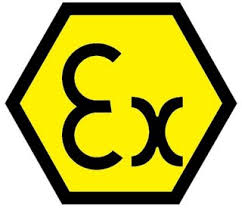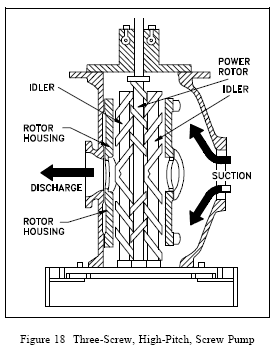
Challenge:
Germany’s Hermann Bantleon GmbH,one of the world’s leading producers and suppliers of lubricants, relies on a combination of speed, flexibility and superior customer
service to deliver both universal and customized product lines to its customers
around the globe. That means operating a wide array of pump types and sizes to
maximize the efficiency of the company’s manufacturing processes.
Solution:
For nearly 30 years, Bantleon has relied on Allweiler AG of Radolfzell, Germany,
for all of its pumping demands. Over those years Allweiler has successfully supplied
different pump types, regardless of the specific pumping task. Sometimes capacity
is a critical factor in selecting a pump for a specific application; other times it’s the type of liquid to be pumped.
Results:
Today Bantleon is able to obtain all of the pumps that it needs from a single source
and with just one contact for sales and service. In total about 80 Allweiler® pumps
are installed at the company’s Ulm location. Seventy of those are screw pumps for
lubricating liquids. Approximately 10 pumps used to move easily combustible
liquids like solvents are installed in explosion-proof versions.
Working To Meet Customer Demands
The development, production and sale of lubricants is a major business segment at Hermann Bantleon GmbH. At its plant in Ulm,Germany, Bantleon begins with high-quality base oils and produces both universal and customized lubricants, according to its own formulas. Customized products are often the best way to meet special
customer requirements in both cutting and noncutting production processes. Bantleon also works to meet customer demands by improving its efficiency and quality-assurance systems. The company mixes additives to a variety of base oils, according to internally developed formulas. It then pulls retained samples from every batch and tests them in Bantleon’s own laboratory, before delivering products to customers.
Time-Tested Pumping Solutions
In addition to providing improved efficiency and superior product quality, Bantleon relies on fast reaction times and flexibility as vital elements of its customer-service capabilities. To deliver that speed and flexibility, the company counts on a wide range of pump types and sizes to play a major role in its manufacturing processes. Allweiler has been meeting those varied application demands for nearly three decades. In fact, nearly 40 SNH Series screw pumps have been in service in Bantleon’s base-oil tank farm over the past 30 years. And, incredibly, not one of the pumps has failed for an extended period of time or required repair during those three decades.
The Right Pump for the Right Job
Bantleon demands different pump types, depending on the specific pumping tasks required. Sometimes the lubricant’s capacity is the critical selection factor; sometimes it is the type of liquid that must be pumped. For example, moving nonlubricating or poorly lubricating liquids like antifreeze requires the use of side-channel pumps. Centrifugal pumps are ideal for clean lubricating liquids. Progressing cavity pumps and peristaltic pumps are better suited for contaminated
liquids, such as used oil. Peristaltic pumps are mostly used for moving used oil in systems at customer sites, because they can run dry, making them suitable for unsupervised operation. And small progressing cavity pumps work best for precisely metering and adding potentially expensive additives. Bantleon must be able to meet the requirements of each of these specific applications, either in its own roduction and filling plants or as part of its full line of services. Accordingly Allweiler AG offers these pump types, accompanied by a wide range of services, like recommending the right pump technology for the right application, as well as calculating and recommending expected NPSH requirements,friction losses and right pile diameter. This combination results in trouble-free and economical operation of the pump and allows Bantleon to obtain all of the pumps that it needs from a single
source, with just one contact for sales and service. Recently a new filling station required Bantleon to provide two AEB Series progressing cavity pumps, to precisely meter high-viscosity additives (up to 6,300 square millimeters per second [mm2/sec.] at 65 degrees Celsius liquid temperature), as well as four NT Series centrifugal pumps capable of moving 30 cubic meters (m3) of base oils at a temperature of 20 degrees Celsius. Depending on the liquid, pumps at Bantleon must be able to handle a viscosity range of between two and 10,000mm2/sec. In total about 80 Allweiler pumps
are installed at the company’s Ulm location. Seventy of those are screw pumps for lubricating liquids. Approximately 10 pumps used to move easily combustible liquids like solvents are installed in explosion-proof versions (ATEX). Nearly one million liters of lubricant are stored in the 80 tanks. Yearly pump throughput is proximately
15 million liters.
Building a Productive – and Profitable – Relationship
At Bantleon a long service life, low investment cost and high availability are major criteria for choosing a pump. But the long and excellent relationship between the two companies remains a key reason that Bantleon continues to purchase its new pumps from Allweiler. This holds true for pumps needed to expand its own production capabilities, as well as for plants that Bantleon constructs for its customers.
Compliance with environmental and worker-protection regulations is another important business consideration. So for Bantleon, it is not enough for the pump manufacturer to simply deliver high-quality pumps. Even more important, the pumps supplied must be able to take advantage of standardized procedures, allowing Bantleon to quickly and easily select the right pump for the job. Rainer Janz, responsible for product and quality management at Hermann Bantleon GmbH, says,“The pumps that we get from Allweiler exhibit consistently high quality; this gives us very high process stability and virtually no downtime.”These benefits go straight to the company’s bottom line, because backup pumps are unnecessary. Finally, Bantleon values superior
design. Allweiler pumps have excellent NPSH values (less than 3m),so that long piping and deep tanks ensure adequate reserves for pressure losses.According to Dieter Schrag, shop and production foreman of Hermann Bantleon GmbH, “Bantleon and Allweiler have had a very strong customer-supplier relationship for several decades. Our company started ordering Allweiler pumps back in the 1970s and 1980s. Obviously my colleagues made a good choice back then. We have found no reason to switch suppliers. We have always been satisfied with the pumpsand the support.”


















